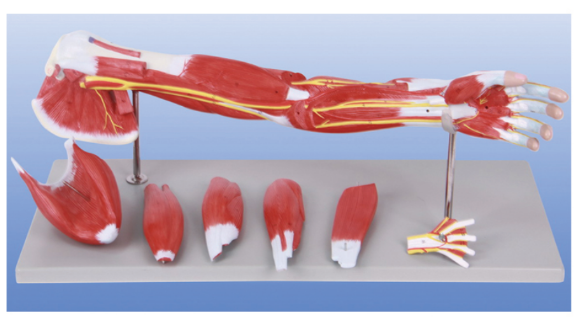In medical education and clinical practice, the anatomical model of upper limb muscle is gradually showing its important value as a bridge between theory and practice. This model not only provides an intuitive, three-dimensional learning platform for medical students, but also helps clinicians understand and apply anatomical knowledge more accurately in practice.
First of all, from a theoretical perspective, by accurately simulating the muscle structure of the human upper limb, medical students can intuitively observe and learn the shape, position, start and end point and function of muscles in three-dimensional space. This intuitive way of learning greatly improves students' understanding and mastery of anatomy knowledge and lays a solid foundation for their future clinical practice.

Secondly, from the perspective of practice, it provides a valuable practical tool for clinicians. In surgical planning, rehabilitation training, and patient education, doctors can use the model to simulate operations, so as to more accurately understand the anatomical structure and functional characteristics of muscles. This will not only help doctors make more rational treatment plans, but also improve their surgical skills and precision, reducing surgical risks.
More importantly, it promotes the close combination of theory and practice. In the learning process, students can observe the model while comparing with the theoretical knowledge in the book, and transform the abstract concept into a concrete image. In clinical practice, doctors can use the model for preoperative planning and simulation operations, and transform theoretical knowledge into practical skills. This two-way interactive learning process not only deepens students' understanding and memory of anatomy knowledge, but also improves their clinical practice ability.
In addition, it has the advantages of portability, durability and reusability. This makes it an affordable and efficient teaching and practice tool that can be widely used in medical education and clinical practice.
To sum up, the anatomical model of upper limb muscle can indeed be a bridge between theory and practice. It not only improves the understanding and mastery of anatomy knowledge for medical students, but also provides a valuable practical tool for clinicians and promotes the close integration of theory and practice.
